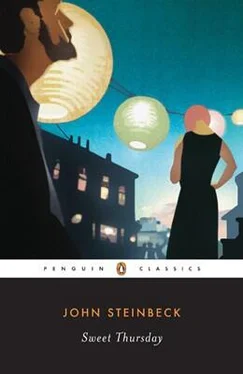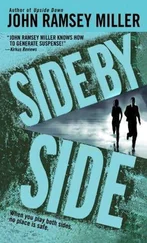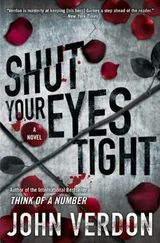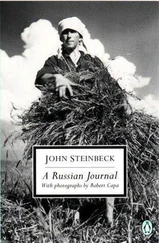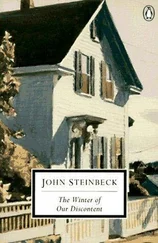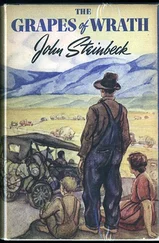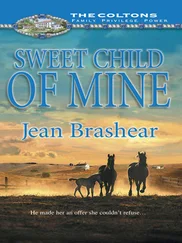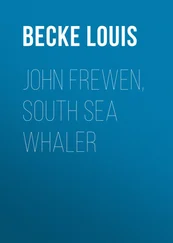John Steinbeck - Sweet Thursday
Здесь есть возможность читать онлайн «John Steinbeck - Sweet Thursday» весь текст электронной книги совершенно бесплатно (целиком полную версию без сокращений). В некоторых случаях можно слушать аудио, скачать через торрент в формате fb2 и присутствует краткое содержание. Год выпуска: 2008, ISBN: 2008, Издательство: Penguin Classics, Жанр: Классическая проза, на английском языке. Описание произведения, (предисловие) а так же отзывы посетителей доступны на портале библиотеки ЛибКат.
- Название:Sweet Thursday
- Автор:
- Издательство:Penguin Classics
- Жанр:
- Год:2008
- ISBN:1-4362-4126-X
- Рейтинг книги:5 / 5. Голосов: 1
-
Избранное:Добавить в избранное
- Отзывы:
-
Ваша оценка:
- 100
- 1
- 2
- 3
- 4
- 5
Sweet Thursday: краткое содержание, описание и аннотация
Предлагаем к чтению аннотацию, описание, краткое содержание или предисловие (зависит от того, что написал сам автор книги «Sweet Thursday»). Если вы не нашли необходимую информацию о книге — напишите в комментариях, мы постараемся отыскать её.
Cannery Row
Sweet Thursday — читать онлайн бесплатно полную книгу (весь текст) целиком
Ниже представлен текст книги, разбитый по страницам. Система сохранения места последней прочитанной страницы, позволяет с удобством читать онлайн бесплатно книгу «Sweet Thursday», без необходимости каждый раз заново искать на чём Вы остановились. Поставьте закладку, и сможете в любой момент перейти на страницу, на которой закончили чтение.
Интервал:
Закладка:
Doc looked at the gift—a telescope strong enough to bring the moon to his lap. His mouth fell open. Then he smothered the laughter that rose in him.
“Like it?” said Mack.
“It’s beautiful.”
“Biggest one in the whole goddam catalogue,” said Mack.
Doc’s voice was choked. “Thanks,” he said. He paused. “After all, I guess it doesn’t matter whether you look down or up—as long as you look.”
“We’ll put her inside for you,” said Mack. “Give me one of them pints. To Doc!” he cried, and under his breath he whispered to Suzy, “Turn the key. Now, starter.”
The ancient engine roared. Doc was sipping from a pint.
“Clutch out—to you and back,” Mack said. “Let in the clutch.”
Suzy did.
The old car deliberately climbed the curb, ripped off the stairs of Western Biological, careened into the street, and crawled away, scattering lumber as it went.
Doc turned in the seat and looked back. The disappearing sun shone on his laughing face, his gay and eager face. With his left hand he held the bucking steering wheel.
Cannery Row looked after the ancient car. It made the first turn and was gone from sight behind a ware house just as the sun was gone.
Fauna said, “I wonder if I’d be safe to put up her gold star tonight. What the hell’s the matter with you, Mack?”
Mack said, “Vice is a monster so frightful of mien, I’m sure we should all be as happy as kings.” He put his arm around Hazel’s shoulders. “I think you’d of made a hell of a president,” he said.
Notes_
Starred notes below also appear in Robert DeMott and Brian Railsback, editors, John Steinbeck: “Travels with Charley” and Later Novels 1947–1962 (New York: Library of America, 2007), pp. 979–82. Special thanks to my research intern, Tracy Kelly, and to Steinbeck specialist Carol Robles for assistance.
Notes
1
DEDICATION: Elizabeth R. Otis (1901–81), Steinbeck’s literary agent and confidante, and cofounder in 1928 of New York literary agency McIntosh and Otis. Steinbeck’s voluminous correspondence with Otis covered thirty-seven years, from 1931 to his death in 1968; a sampling is available in Steinbeck: A Life in Letters (1975), Letters to Elizabeth (1978), and in the Appendix to The Acts of King Arthur. The main collection is housed at Stanford University Library’s Department of Special Collections and University Archives. Access the individual Container List of the Steinbeck–Otis correspondence in the John Steinbeck Collection, 1902–1979, at content.cdlib.org/view?docId=tf3c6002vx&chunk.id=dsc-1.8.6.
2
PROLOGUE: Originally titled “Introduction Mack’s Contribution,” a much longer version of the prologue (156 lines long as opposed to 47) appears in the original autograph manuscript, the typed manuscript, and the unrevised galley proofs of Sweet Thursday (all housed at the Harry Ransom Humanities Research Center, University of Texas, Austin). It is not known why Steinbeck excised such a large portion of the text.
3
that book Cannery Row: Steinbeck’s earlier roman à clef novel (1945), set in pre–World War II Monterey, featuring the protagonist Doc (based on Edward F. Ricketts) and including in its cast of characters numerous other lightly fictionalized, loosely disguised real-life persons. The novel is dedicated “For Ed Ricketts / who knows why or should.” On the dedication page of the copy Steinbeck presented to Ricketts, he wrote, “with all the respect and affection this book implies.” In his memoir “About Ed Ricketts” (1951), Steinbeck wrote:
I used the laboratory and Ed himself in a book called Cannery Row. I took it to him in typescript to see whether he would resent it and to offer to make any changes he would suggest. He read it through carefully, smiling, and when he had finished he said, “Let it go that way. It is written in kindness. Such a thing can’t be bad.” But it was bad in several ways neither of us foresaw. As the book began to be read, tourists began coming to the laboratory, first a few and then in droves. People stopped their cars and stared at Ed with that glassy look that is used on movie stars. Hundreds of people came into the lab to ask questions and peer around. (pp. lvi–lvii)
4
Cannery Row: Site of numerous fish canneries, fish reduction plants, and processing and packing houses along Ocean View Avenue, Monterey. The street was renamed Cannery Row in 1958. That section of town was called New Monterey, which, Susan Shillinglaw explains in A Journey into Steinbeck’s California (2006), was “not Spanish Monterey, not Methodist Pacific Grove, but the shoreline and sloping wooded hills between these places…” (p. 107)
5
“As with the oysters in Alice …”: From “The Walrus and the Carpenter,” a poem in chapter four of Through the Looking-Glass and What Alice Found There (1871), by British writer and mathematician Charles L. Dodgson (1832–98), whose pseudonym was Lewis Carroll: “ ‘O Oysters,’ said the Carpenter, / ‘You’ve had a pleasant run! / Shall we be trotting home again?’ / But answer came there none—/ And this was scarcely odd, because / They’d eaten every one.”
6
pilchards: California sardine (Sardinia caerulea). At eleven to fourteen inches in length, it was the state’s most important commercial fish until midcentury. According to a graph in Richard F. G. Heimann and John G. Carlisle’s The California Marine Fish Catch for 1968 and Historical Review, 1916–1968, reprinted in Michael Hemp, Cannery Row (1986), in 1941–42, the Monterey area sardine catch was a record 250,287 tons. The canning boom driven by World War II saw Monterey become “the Sardine Capital of the World,” though in 1947–48, around the time of Doc’s discharge from the army, the catch was 17,630 tons (p. 110). Marine scientist Ed Ricketts studied the sardine extensively during his later career, and in his final article on the subject, published in the Monterey Peninsula Herald in 1948 (shortly before his death) and reprinted in Ricketts, Breaking Through (2006), concluded that if “conservation had been adopted early enough, a smaller but streamlined cannery row…would be winding up a fairly successful season, in stead [ sic ] of dipping, as they must be now, deeply into the red ink of failure” (p. 330). As Katherine Rodger asserts in her Introduction to Breaking Through, his “pleas for moderation fell on deaf ears…” (p. 73). In 1953 to 1954, the year Sweet Thursday was published, a greatly reduced Monterey fleet brought in fifty-eight tons.
7
Doc: Marine biologist, pioneering ecologist, and intellectual polymath Edward Flanders Robb Ricketts (1887–1948) was the model for Steinbeck’s fictional Doc. Steinbeck’s portrayal of Doc is often biographically accurate regarding Ricketts’s physical gestures and appearance, his personal habits and tastes, and his cultural interests (especially in music, literature, and philosophy). Steinbeck embroiders, too: Ricketts attended the University of Chicago (1919–22) but never graduated, whereas his fictional counterpart holds a PhD from that institution. The research award Doc receives from Old Jingleballicks in chapter 37 may have been compensation for Ricketts’s failure at winning a Guggenheim Fellowship in 1947. On the other side, in order to emphasize Doc’s romantic adventures, Steinbeck ignores Ricketts’s role as a husband and a father to three children from his marriage to Anna “Nan” Maker in 1922. (The couple later separated but were never legally divorced.) “Half-Christ and half-goat,” Steinbeck summed him up in his 1951 elegy “About Ed Ricketts,” itself an exercise in paradox, selective memory, and impressionism. Steinbeck’s eighteen-year relationship with Ricketts was profoundly beneficial, as Richard Astro established in John Steinbeck and Edward F. Ricketts (1973). Besides their collaborative book, Sea of Cortez (1941), Steinbeck drew on Ricketts’s ideas so deeply and so often that after Ricketts’s death in May 1948, Steinbeck told mutual friends in Steinbeck: A Life in Letters (1976): “Wouldn’t it be interesting if Ed was us. And that now there wasn’t any such thing or that he created out of his own mind something that went away with him. I’ve wondered a lot about that. How much was Ed and how much was me and which was which” (p. 316). Excellent resources with which to survey the world of Ed Ricketts are Katharine A. Rodger’s Renaissance Man of Cannery Row (2002) and her Breaking Through (2006), as well as Eric Enno Tamm’s Beyond the Outer Shores (2004).
Читать дальшеИнтервал:
Закладка:
Похожие книги на «Sweet Thursday»
Представляем Вашему вниманию похожие книги на «Sweet Thursday» списком для выбора. Мы отобрали схожую по названию и смыслу литературу в надежде предоставить читателям больше вариантов отыскать новые, интересные, ещё непрочитанные произведения.
Обсуждение, отзывы о книге «Sweet Thursday» и просто собственные мнения читателей. Оставьте ваши комментарии, напишите, что Вы думаете о произведении, его смысле или главных героях. Укажите что конкретно понравилось, а что нет, и почему Вы так считаете.
